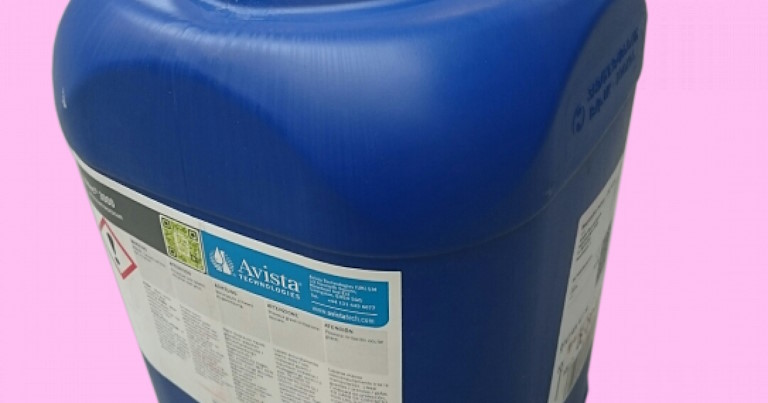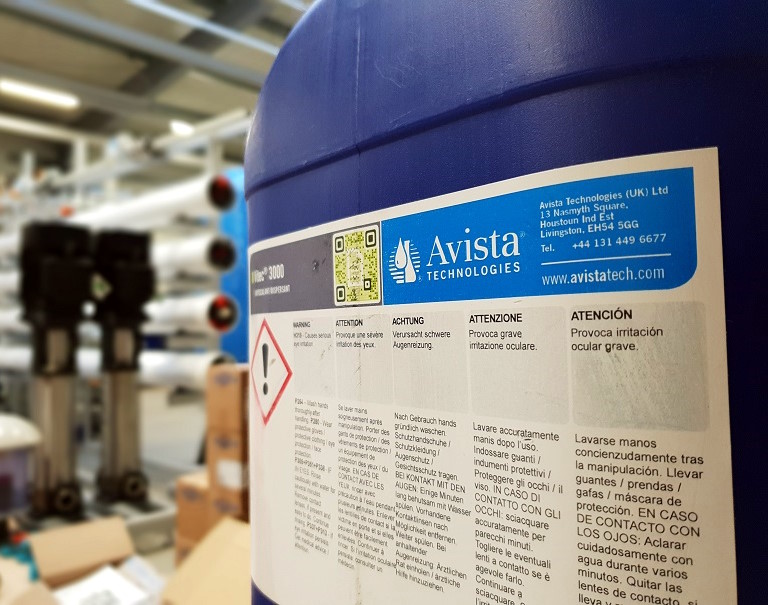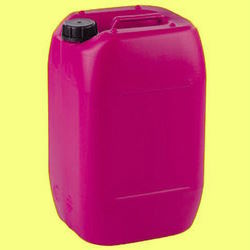Antiscalants are chemicals used to prevent limescale deposits in water treatment systems, particularly reverse osmosis (RO) and nanofiltration (NF) systems. These substances improve the efficiency and lifespan of water treatment systems by preventing crystal and limescale formation. In this article, we explain the chemical formula of antiscalants, their mode of action, applications, and significance.

Definition and principle of action of corrosion protection materials
Definition of pollution control
Anti-limescale agents are substances that increase the efficiency and lifespan of water treatment systems by preventing the formation of mineral deposits. These agents are typically polymer or phosphate compounds that prevent the formation of deposits by changing the shape and structure of crystals.
How does the anti-limescale product work?
Corrosion protection materials work in different ways:
- Inhibition of crystal formation : Antiprecipitates prevent the formation of precipitate crystals by inhibiting crystal formation.
- Crystal distortion : Anticorrosive materials can change the structure of crystals, transforming them into non-precipitable forms.
- Dispersion of suspended particles : Corrosion protection materials can disperse suspended particles and prevent their accumulation.

Chemical formula of the corrosion protection material
Antifouling compounds
Corrosion protection materials include several compounds that can be divided into the following categories:
- Phosphonates : These compounds contain phosphonate groups (PO₃²⁻) which prevent the formation of calcium carbonate and calcium sulfate deposits.
- Example: Ethylenediaminetetraphosphonic acid (EDTMP)
- Acrylic polymers : These compounds contain acrylic polymer chains that help disperse suspended particles and prevent the formation of deposits.
- Example: Polyacrylic acid (PAA)
- Maleic acid polymers : These compounds contain polymer chains of malic acid, which help prevent the precipitation of calcium carbonate and calcium sulfate.
- Example: Polymalic acid (PMA)
- Phosphate compounds : These compounds contain phosphate groups (PO₄³⁻) which prevent the formation of mineral deposits.
- Example: Sodium hexametaphosphate (SMP)
An example of a chemical formula for a corrosion inhibitor
For example, one of the most common corrosion protection materials contains polyacrylic acid (PAA) with the following chemical formula:
Due to the presence of carboxyl groups (COOH), this polymer is able to react with metal cations such as calcium and magnesium and prevent the formation of mineral deposits.
Use of antipollution agents
1. Reverse osmosis systems (RO)
Antiscalants are commonly used in reverse osmosis (RO) systems to prevent the formation of mineral deposits on membranes. These substances help increase efficiency and extend membrane life.
2. Nanofiltration systems (NF)
Anti-limescale agents are also used in nanofiltration (NF) systems. They help prevent sludge formation and improve the efficiency of the NF membranes.
3. Boilers and heating systems
Limescale inhibitors are used in boilers and heating systems to prevent mineral deposits and improve the efficiency of these systems. These materials help reduce maintenance costs and extend the lifespan of the equipment.
4. Industrial water purification
Antiscalants are used in industrial water treatment to prevent the formation of mineral deposits in water treatment systems. These materials improve the efficiency of treatment processes and reduce maintenance costs.

The importance of using antifouling materials
1. Increase the lifespan of the equipment
Using anti-limescale products helps extend the lifespan of your water treatment system. These products increase the efficiency and longevity of your system by preventing limescale deposits and reducing the damage they cause.
2. Reduction of maintenance costs
The use of limescale protection agents contributes to reducing maintenance and repair costs for water treatment systems. These agents contribute to lower operating costs by reducing the need for cleaning and replacing membranes and components.
3. Improving the efficiency of the system
The use of anti-limescale agents helps increase the efficiency of water treatment systems. These materials help increase system efficiency and reduce water loss, prevent the formation of sediment, and maintain the quality of the resulting water.
4. Reducing energy consumption
The use of anti-limescale reagents contributes to reducing energy consumption in water treatment systems. These reagents contribute to reducing energy consumption and increasing system efficiency by increasing pump efficiency and reducing hydraulic resistance.
5. Environmental protection
The use of descaling agents contributes to environmental protection. These materials help reduce industrial waste and conserve natural resources, as fewer membranes and equipment need to be replaced.

Safety tips for using corrosion protection materials
1. Use protective equipment.
Use personal protective equipment such as gloves, safety goggles, and protective clothing when preparing and administering the anti-contamination solution. This will help reduce the risk of chemical exposure.
2. Follow the manufacturer’s instructions.
Follow the manufacturer’s instructions for the anti-limescale agent and prepare a solution with the required concentration. The amount of anti-limescale agent should vary depending on the system’s needs and water consumption.
3. Proper storage of chemicals
Corrosion protection chemicals should be stored in sturdy containers with suitable lids. They should be stored in a cool, dry place , away from flammable and corrosive materials.
4. Staff training
Employees who use corrosion inhibitors must be trained in the proper and safe use of these agents. This training helps reduce the risks associated with the improper use of chemicals.
Diploma
Antiscalants are important chemicals that prevent the formation of mineral deposits in water treatment systems. The use of these substances helps extend equipment life, reduce maintenance costs, improve system efficiency, and reduce energy consumption. Adhering to safety precautions and properly using antiscalants can improve water quality and reduce operating costs.